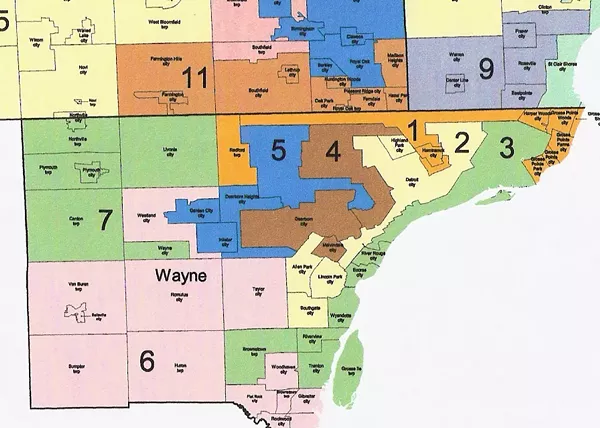A new report by a nonpartisan group attempts to objectively measure gerrymandering in Michigan's Legislative and Congressional districts.
The Citizens Research Council used several statistical measures to put an objective number on the problem, and determined that the state's districts are indeed gerrymandered. That's significant because the crux of the argument against gerrymandering is that votes cast by residents who live in gerrymandered districts don't count as much as votes in non-gerrymandered districts.
Until recently, there hasn't been such a measure or formula, and that makes mounting a legal challenge to gerrymandered districts difficult. The Supreme Court has made it clear that it wants an objective test to show how a district is gerrymandered and how it impacts voters.
Generally, the simplest measure has been looking at vote totals and representation — essentially an eyeball test. In Michigan, Democratic State House candidates received about the same amount of votes as Republicans in 2016, but Republicans hold a 63-47 advantage. In 2014, Democrats in the House got far more votes than Republicans, but Republicans held a 63-47 majority. Similar scenarios played out in the State Senate and Congressional districts.
But legally proving something is amiss requires more. Though Citizens Research says its formula is complex and isn't perfect, it says it is a sound measure, and it found Michigan's Legislative and Congressional districts are indeed gerrymandered.
Its tests show that Michigan's districts are "stacked and cracked." As Citizens Research explains in its report:
"When districts are packed, an overwhelming majority of voters from the same party are put into one district. As most of the votes go to one party, the party that wins the district will waste many of their votes in an election that is not close."
"If a district is cracked, it means that regions are split so that one party wins a large number of districts by a narrow margin. While the voters for the losing party in those districts could elect several candidates if they were districted fairly, they typically are unable to elect any candidate, and thus waste votes."
Citizens Research uses the "wasted votes" in stacked and cracked districts to develop its formulas.
"The efficiency gap calculates the frequency that a party ‘wastes’ votes. A wasted vote, according to the method, is a vote cast for a party that is not helpful in putting the candidate past 50 percent of the two-party share of votes. Any vote cast for a losing candidate, and any vote cast for a candidate after they receive a majority of the two-party vote share, is considered wasted by the metric. Each party’s total wasted votes for an office type (congressional, state house, or state senate) would then be summed and the difference is taken and divided by the total votes cast to create a metric that can be compared across different states and years. The original creators of the efficiency gap recommended any score above an absolute value of eight would signal partisan bias beyond variability for state legislative districts, and any value beyond 2 seats for congressional districts would signify partisan bias."
Though some states, like Wisconsin, are pushing legal challenges to gerrymandered districts where such data could be useful, it helps Michigan by providing more information as voters consider in November whether to approve an independent redistricting commission.
The proposal would create a 13-member redistricting commission comprised of four Democrats, four Republicans and five independent members who are not affiliated with any major political party to draw legislative lines.
You can find Citizens Research report here.
Stay on top of Detroit news and views. Sign up for our weekly issue newsletter delivered each Wednesday.







